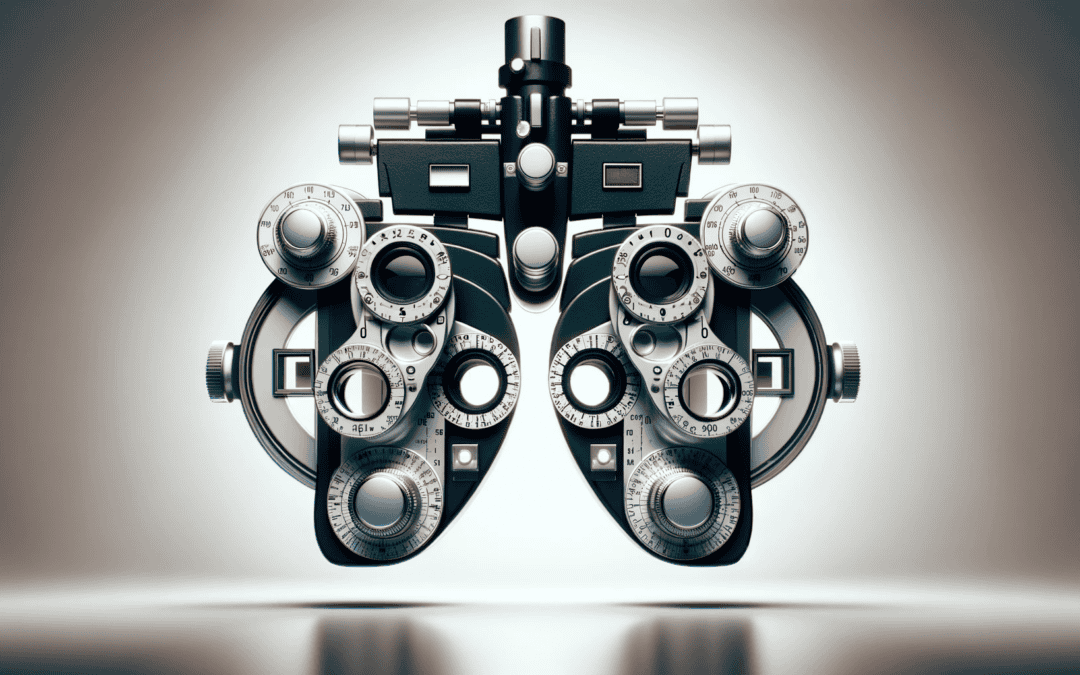Visit OpticianWorks.com for the more content like this and the best comprehensive optician, ABO, and NCLE study programs available online.
What does it mean to transpose an eyeglass prescription?
Depending on the equipment used by the doctor, a prescription may be in plus or minus cylinder form. For surfacing, the optical lab uses the minus form, meaning if a prescription is written in a plus cylinder form it must be transposed before processing.
Transposing eyeglass prescriptions is a fundamental skill in the field of optometry and opticianry, particularly when dealing with prescriptions for astigmatism. This process involves converting a prescription written in one format to another format without changing its optical power. The need for transposition arises primarily due to the two different notations used for prescribing astigmatic corrections: the plus cylinder form and the minus cylinder form.
Astigmatism, a common refractive error, is typically corrected with cylindrical lenses. These lenses have power in only one meridian and are used to correct the uneven focusing of light caused by the irregular shape of the cornea or lens in the eye. In an eyeglass prescription, astigmatism is represented by three values: sphere (Sph), cylinder (Cyl), and axis. The sphere indicates the degree of nearsightedness or farsightedness, the cylinder denotes the amount of astigmatism, and the axis defines the orientation of the astigmatism.
In the plus cylinder form, the cylinder value represents the additional power required to correct astigmatism on top of the spherical power. Conversely, in the minus cylinder form, the cylinder value reflects the subtraction needed from the spherical power to correct astigmatism. Optometrists may prefer one format over the other based on their training or geographic location.
Transposing a prescription involves a few mathematical steps. First, the cylinder power is changed from plus to minus or vice versa. This change in cylinder sign necessitates an adjustment to the sphere power. Specifically, the original cylinder power is algebraically added to the sphere power. Finally, the axis is adjusted by 90 degrees to account for the change in the orientation of the cylinder power. This axis adjustment is crucial because the axis in a cylindrical lens prescription defines the meridian that is 90 degrees away from the meridian of the lens's power.
It's important to transpose prescriptions accurately, as errors can lead to incorrect lens fabrication, resulting in poor visual correction and discomfort for the patient. While modern lens manufacturing and electronic prescribing have reduced the frequency of manual transpositions, understanding this process remains essential for eye care professionals. It ensures proper communication between optometrists, ophthalmologists, and opticians, and is crucial when verifying lens specifications or troubleshooting lens issues.
How to Transpose a Prescription Written in Plus Cylinder Form to Minus Cylinder Form:
1. Add the sphere and cylinder powers to determine the new sphere power.
2. Change the sign of the cylinder.
3. Change the axis by 90 degrees.
Example:
Transpose -3.00 +2.00 x 30
1. Add the sphere and cylinder powers to determine the new sphere power.
(-3.00) + (+2.00) = -1.00
2. Change the sign of the cylinder
-2.00
3. Change the axis by 90 degrees.
120
The transposed prescription is:
-1.00 -2.00 x 120
Visit OpticianWorks.com for the more content like this and the best comprehensive optician, ABO, and NCLE study programs available online.

